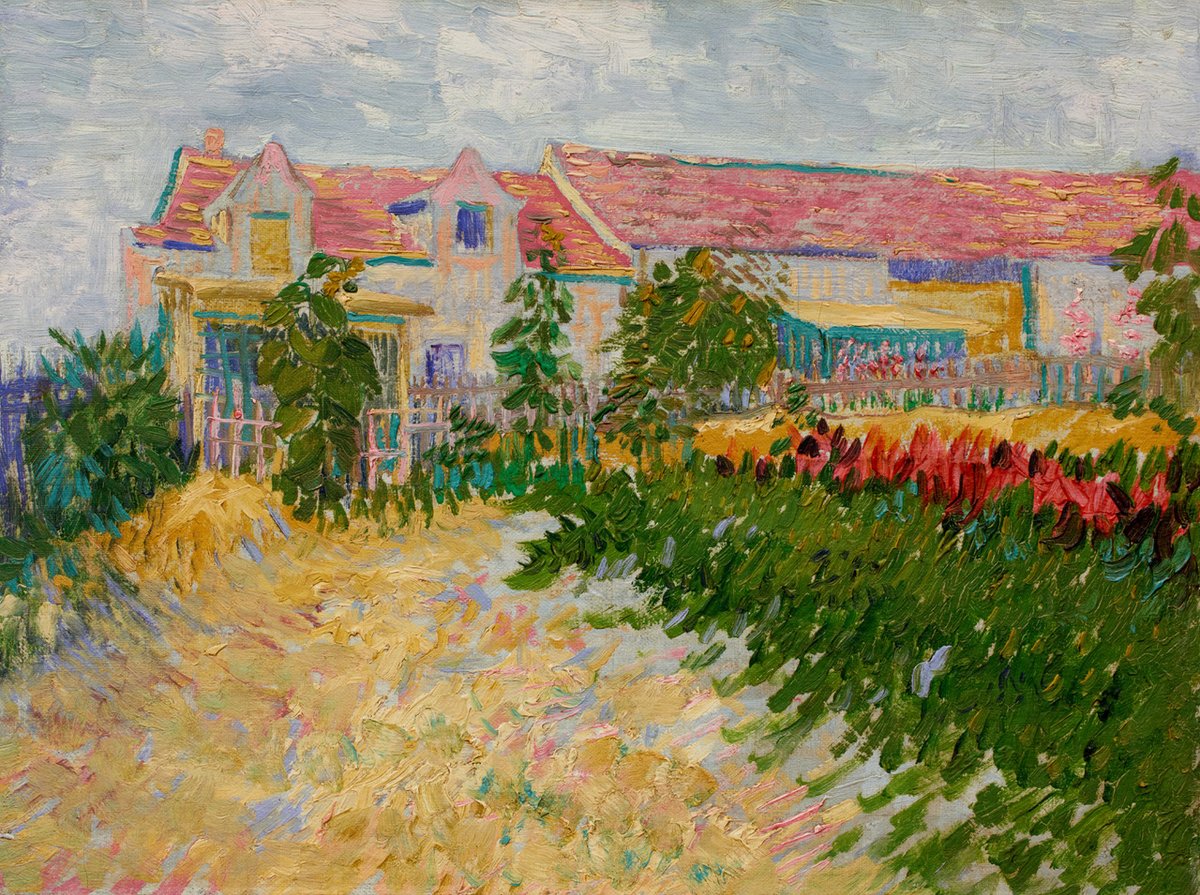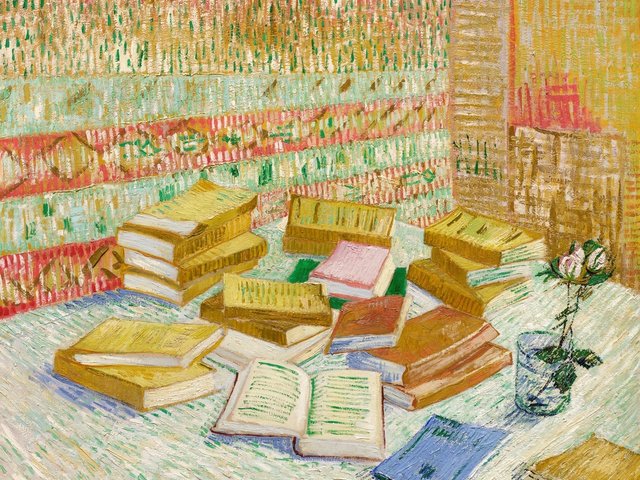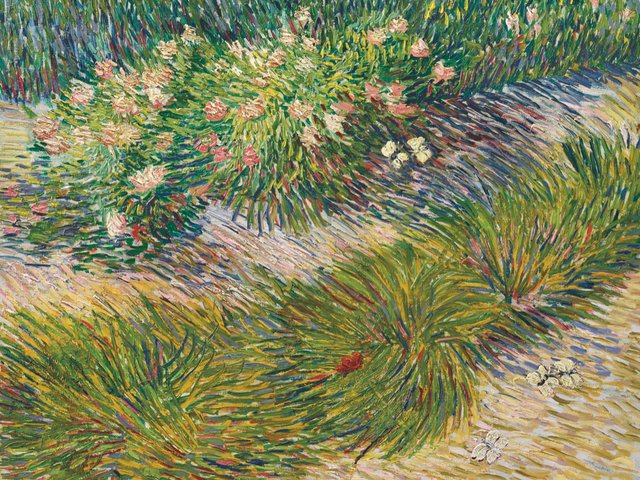Garden in front of the Debray Farm (July-August 1887) will be offered at Sotheby’s, New York on 16 May, with an estimate of $20-$30m. It was painted just a few minutes’ walk from the apartment that Vincent shared with his brother Theo in Montmartre.
In the centre of the composition are several giant sunflower plants, apparently much taller than a person. It would be just a year later, in Provence, that Van Gogh created his famed Sunflower still lifes.

Detail of a sunflower in Van Gogh’s Garden in front of the Debray Farm
Credit: Sotheby’s
The setting of the Sotheby’s painting is the garden of the 18th-century farmhouse of the Debray family, who owned the windmills at the top of Montmartre. By Van Gogh’s time these mills had been transformed into an entertainment complex, the Moulin de la Galette, but his picture makes the farmhouse garden appear as a rustic retreat.
An 1887 photograph shows the hilltop farmhouse overlooking the urban sprawl of Paris. The bare back garden in the photograph, made in the same year as the painting, suggests that Van Gogh used considerable artistic licence in transforming it into a pastoral scene. Certainly there are no signs of giant sunflowers (although the photograph may well have been taken outside their summer season).
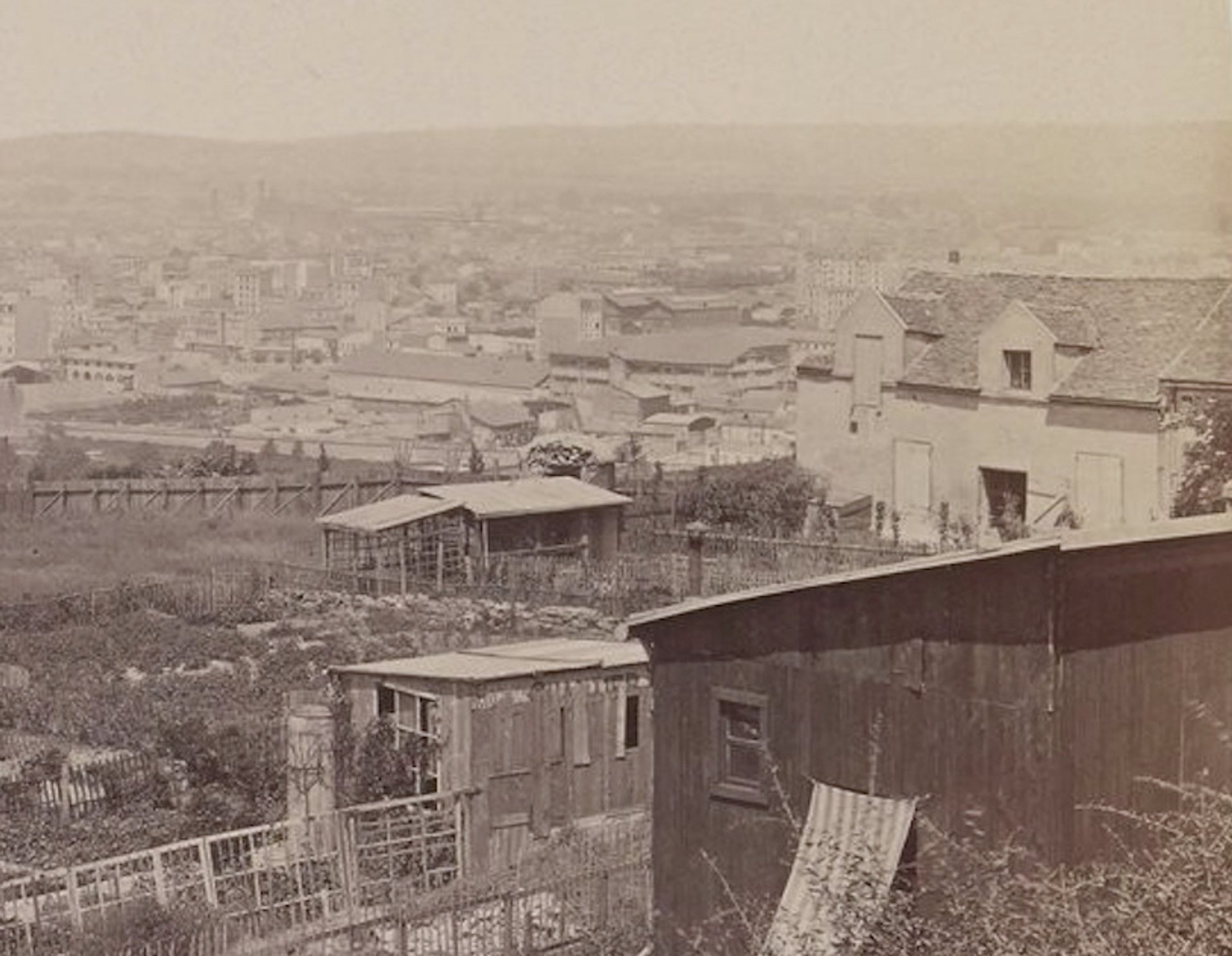
Detail of Henri Daudet’s photograph of the Debray farm, Montmartre (1887)
Credit: Musée de Montmartre, Paris
In 1937 Garden in front of the Debray Farm was bought by Miriam Alexandrine de Rothschild (1884-1965), a distinguished art collector and member of the French Jewish banking family. Just before the outbreak of the Second World War she placed the Van Gogh and other artworks in her safe in a Parisian bank. Shortly afterwards she fled to Switzerland.
In December 1941, after the German occupation of France, Garden in front of the Debray Farm was seized from the bank vault by the Nazis and sent to Berlin for Hermann Göring, Hitler’s deputy. Göring then used the Van Gogh and 24 looted pictures from other owners in a part exchange for a Rembrandt and two carpets.
The Van Gogh was dispatched to the Lucerne-based Galerie Fischer, apparently using the diplomatic bag to get round customs problems. In April 1942 Theodore Fischer sold Garden in front of the Debray Farm to the Swiss arms manufacturer and collector Emil Bührle.
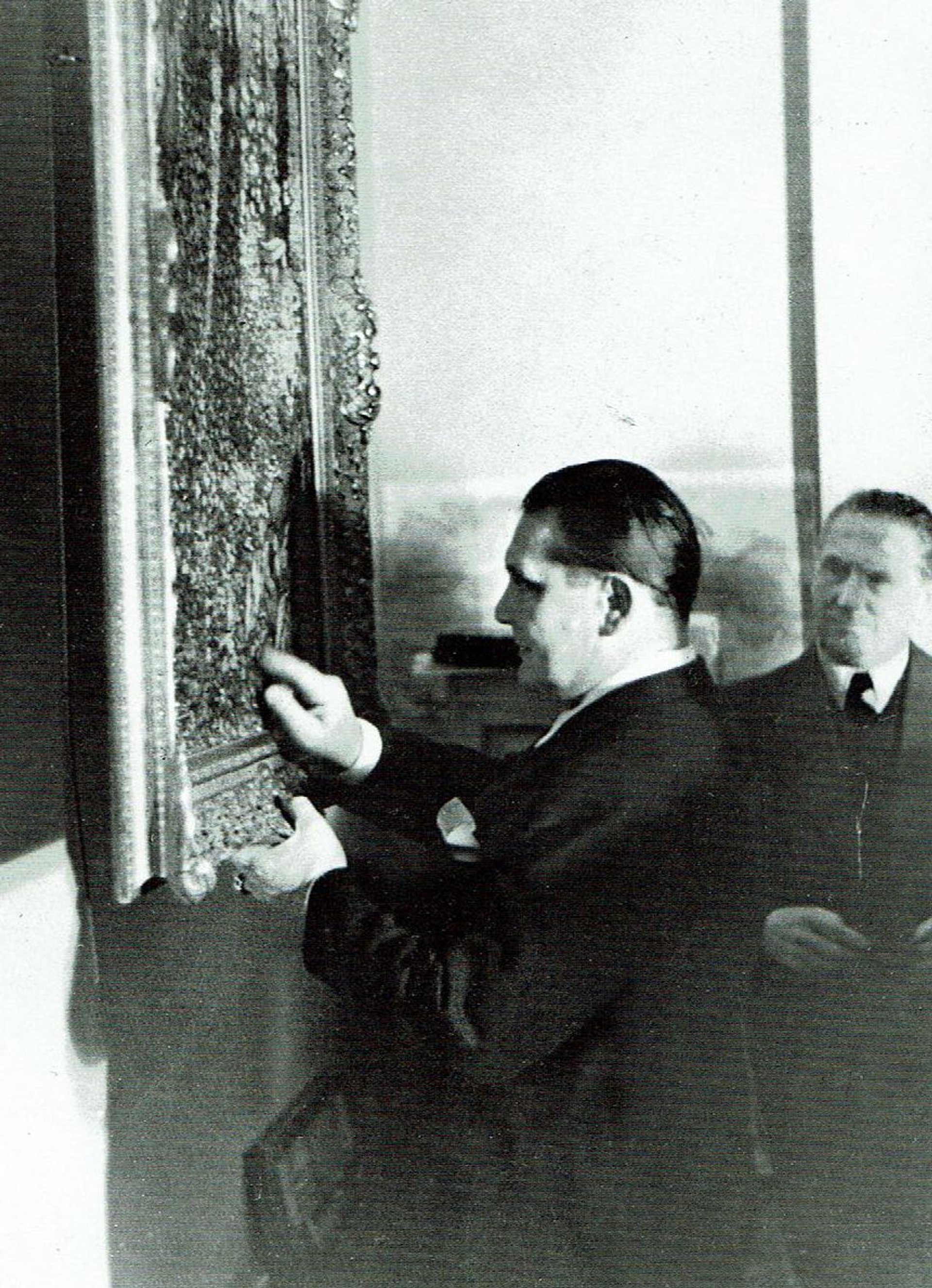
Nazi deputy leader Hermann Göring inspecting another looted Van Gogh in Paris,Trees with Ivy (May 1889), which belonged to another member of the de Rothschild family
After the war de Rothschild took legal action to secure the restitution of the Van Gogh. In 1948 the Swiss courts ordered Bührle to return the painting to her. It later passed to her sister-in-law Lucy Spiegl, who sold it in 1965. It should be stressed that Garden in front of the Debray Farm was properly restituted, so there are no residual problems over its looting by the Nazis during the war.

Van Gogh’s Wheatstacks (June 1888)
Credit: Christie’s
De Rothschild had also owned another important Van Gogh, a watercolour of Wheatstacks (June 1888). This too was seized by the Nazis, although its subsequent story is quite different, since it was not restituted to her after the war. Christie’s recently helped facilitate a complex deal with the heirs of de Rothschild and another previous Jewish owner, Max Meirowsky, along with the heirs of Edwin Cox. This led to the sale of Wheatstacks in 2021, when it fetched $35.9m. Her third Van Gogh was Harvest in Provence (June 1888), which remained in her possession and was later donated to the Israel Museum in Jerusalem.
By the early 1990s the Sotheby's Garden in front of the Debray Farm had been acquired by the Japanese paper manufacturer and collector Ryoei Saito, who died in 1996. He is best known for having paid the highest price ever for a Van Gogh, $82.5m for Portrait of Dr Gachet (June 1890) at auction in 1990. Although he once said that the portrait should be cremated with his body, fortunately this did not happen. Portrait of Dr Gachet has now disappeared into a mysterious private collection.
A major selling point at the Sotheby’s auction for Garden in front of the Debray Farm on 16 May will be its colouration, evidence of the influence of the Impressionists on Van Gogh. The powerful yellows in the foreground prefigure his exuberant paintings created in Provence, where he resettled six months after painting this Montmartre scene.
Other Van Gogh news:
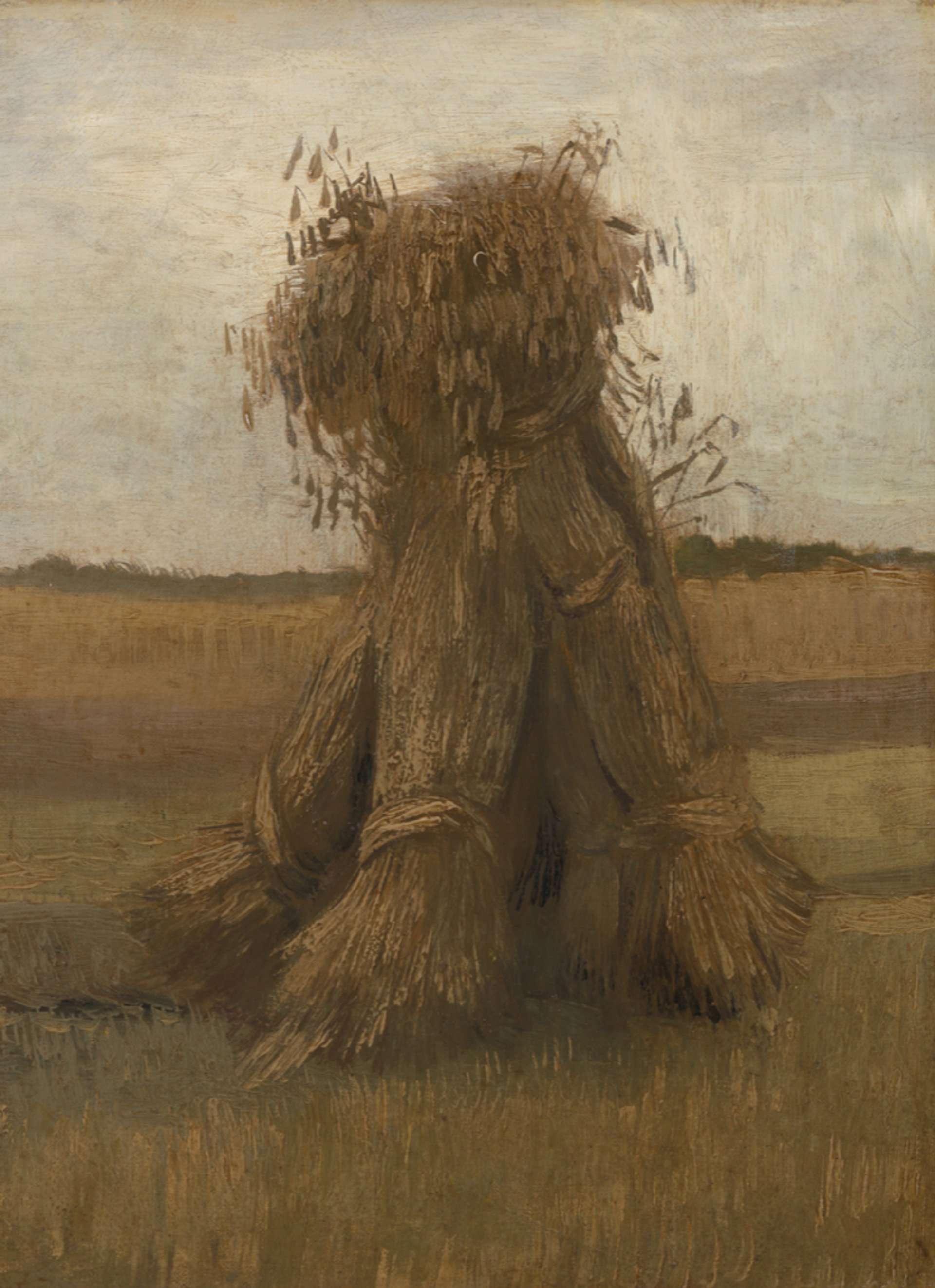
Van Gogh’s Sheaves of Wheat (July-August 1885), on loan to Van Gogh, Cézanne, Le Fauconnier and the Bergen School, Alkmaar
Credit: Kröller-Müller Museum, Otterlo
Van Gogh, Cézanne, Le Fauconnier and the Bergen School opens tomorrow (until 3 September) at the Stedelijk Museum Alkmaar, in the north of the Netherlands. Along with the two celebrated names, the show also features Henri Le Fauconnier (1881-1945), a French Cubist painter. All three influenced the so-called Bergen School, a group of artists (not a college) who worked in the village of Bergen, outside Alkmaar, in around 1915-25. The Expressionists of the Bergen School included Leo Gestel, Gerrit Willem van Blaaderen and Else Berg. The Alkmaar show includes five Van Gogh loans.


